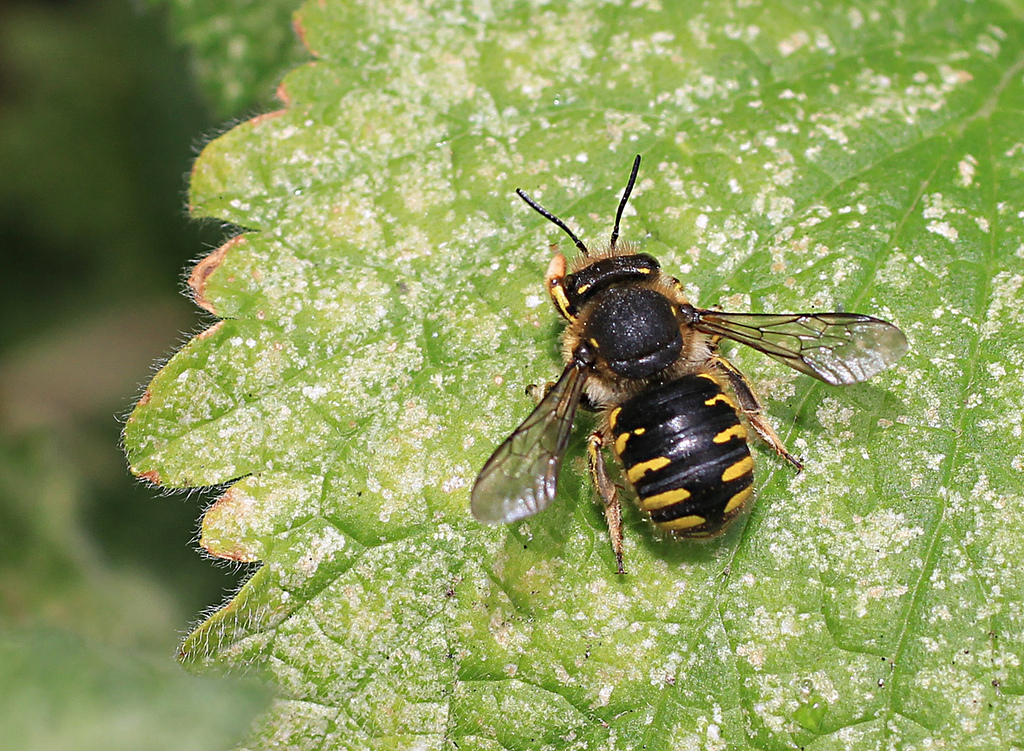Aims
Anthidium manicatum (The Wool-carder Bee) is probably one of the earliest recorded solitary bee species in Britain, with a well documented occurrence in Selborne in July 1772, when the celebrated naturalist Gilbert White wrote of its behaviour: "July 11, 1772 – There is a sort of wild bee frequenting the garden-campion for the sake of its tomentum, which probably it turns to some purpose in the business of nidification. It is very pleasant to see with what address it strips off the pubes, running from the top to the bottom of a branch, & shaving it bare with all the dexterity of a hoop-shaver. When it has got a vast bundle, almost as large as itself, it flies away, holding it secure between its chin and its forelegs".
The bee is on the wing from June (occasionally late May) until August. With 2015 being a late season, activity is now starting to gather pace as we move towards the height of summer. The males are large, territorial and aggressive in defence of their territories, which often include patches of Lamb's-Ear, Lavender, Lychnis, Marrubium and other Lamiaceae (Labiates). Recent records from Edinburgh suggest that the species is moving northwards. It is a species commonly found in parks and gardens.
Any records for 2015 should be submitted to Stuart Roberts (spmr[at]msn.com) with the word "anthidium" in the message line, or online through the BWARS website here so that new maps can be drawn. Records should include full details of locality (grid reference or a postcode), date, recorder and identifier and, wherever possible, a photograph for verification purposes.
Updated maps will appear in due course as and when new records appear. The 2014 records appearing in red.
Submit a record online here
Back to beginners bees wasps & ants index

Photo: Penny Frith

